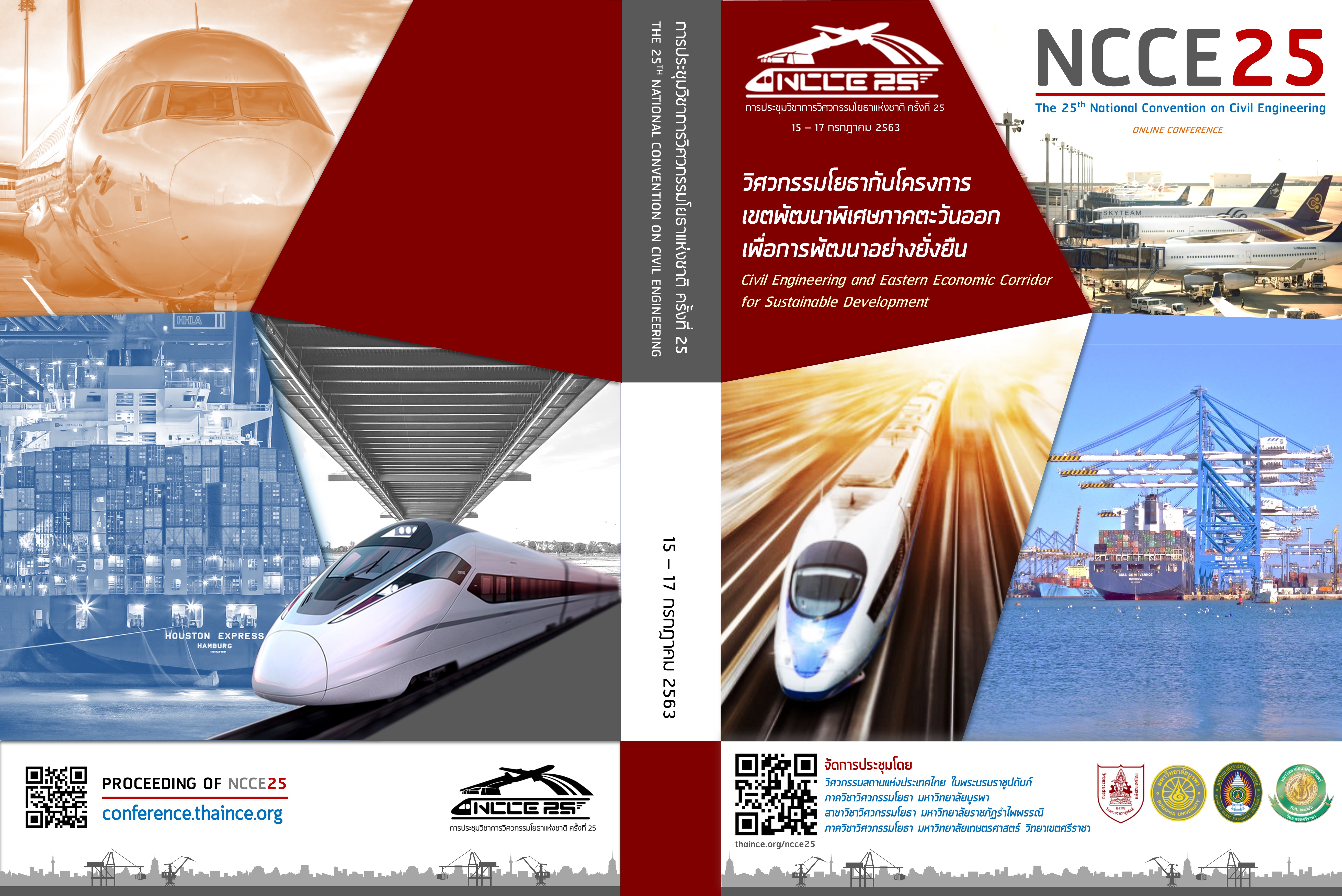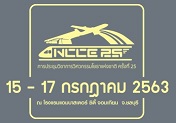A Study of Personal Vibration Perceptibility of Buraphavithi Elevated Expressway
Keywords:
vibration perceptibility, elevated expressway, Buraphavithi expressway, structural acceleration responseAbstract
This research studied the vibration level of elevated expressway structure affecting to personal perceptibility for 3 stations of Buraphavithi expressway including Chonburi, outer-ring road and Bangna stations. The purpose was to evaluate the vibration level affecting to the officers. The results could be useful for human resource administration and guideline for structural assessment of Buraphavithi expressway. Field testing was conducted for 12 hours for each station. Vertical acceleration response was measured at the first lane from the left-hand side which is for all vehicular types. Effects of relevant factors such as vehicle type, physical property of the station, vibration amplitudes at pavement and toll booth were considered. Evaluation on vibration perceptibility level was carried out from amplitude and frequency of acceleration response. The international criterions were selected for comparison. It was found that Chonburi station allowed the strongest level at “unpleasant”. The outer-ring road and Bangna stations allowed perceptibility level at “perceptible”. This was because the considered traffic lane of Chonburi station is at the cantilever end of the prestressed concrete box-girder section. The induced acceleration amplitude was therefore larger than other stations. Besides, the concrete base of the toll booth could reduce the amplitude of vibration for 17% in average. Moreover, the scenario that two vehicles at the adjacent lanes driving off the stations simultaneously could enhance vibration amplitude to be stronger, significantly.
Downloads
References
[2] Wiffin, A. C. and Leonard, D. R. (1971). A survey of traffic induced vibrations. Transport and Road Research Laboratory, 57 pp.
[3] International Standard ISO 2631-1. (1997). Mechanical Vibration and shock – Evaluation of human exposure to whole-body vibration – Part 1: General Requirements, International Standards Organization.
[4] International Standard ISO 2631-2. (1989). Evaluation of Human Exposure to Whole-Body Vibration - Part 2: Human Exposure to Continuous and Shock-Induced Vibrations in Buildings, International Standards Organization.
[5] British Standards Institution, BS 6472:1992. (1992). Evaluation of human exposure to vibration in buildings (1 Hz to 80 Hz). British Standards Institution, London.
[6] American National Standards Institute, ANSI S3 29-1993. (1993). Guide to the evaluation of human exposure to vibrations in buildings. Acoustical Society of America, New York, NY.
[7] Deutches Institut fur Normung, DIN 4150: Parts 1, 2 and 3. (1983). Vibrations in buildings: effects on structures. Provisional Standards Revised Draft - Part 3, Berlin.
[8] Athanasopoulos, G.A. and Pelekis, P.C. (2000). Ground vibrations from sheet pile driving in urban environment : measurements, analysis and effects on buildings and occupants, Soil Dynamics and Earthquake Engineering, 19, pp. 371-387.
[9] ธนะเมษฐ์ ประจวบกุลวัฒน์ (2559). การศึกษาผลกระทบการสั่นสะเทือนของโครงสร้างทางพิเศษยกระดับ ที่มีผลต่อการรับรู้ของบุคคลบริเวณสถานีชำระค่าผ่านทาง. งานนิพนธ์บัณฑิตศึกษา หลักสูตรวิศวกรรมศาสตรมหาบัณฑิต สาขาวิชาวิศวกรรมการจดัการงานก่อสร้างและงานโครงสร้างพ้ืนฐาน คณะวิศวกรรมศาสตร์ มหาวิทยาลัยบูรพา.
[10] Kelley, P.L., Dellorusso, S.J., and Russo, C.J. (1980). Building response to adjacent excavation and construction. Effects of construction on structures, Geotechnical Special Publication, ASCE, 84, pp. 80-97.
[11] Lenzen, K.H. (1966). Vibration of Steel Joist – Concrete Slab Floors. Engineering Journal, AISC, 133-136.
[12] Skipp, B.O. (1997). Ground vibration-codes and standards. Proceedings of the Conference on Ground Dynamics and Man-made Processes. Institution of Civil Engineers, London.
[13] Von Gierke, H. E. and Goldman, D. E. (1988). Effects of shock and vibration on man. Shock and vibration handbook, McGraw-Hill, pp. 41–58.
Downloads
Published
How to Cite
Issue
Section
License
บทความทั้งหมดที่ได้รับการคัดเลือกให้นำเสนอผลงานในการประชุมวิชาการวิศวกรรมโยธาแห่งชาติ ครั้งที่ 25 นี้ เป็นลิขสิทธิ์ของ วิศวกรรมสถานแห่งประเทศไทย ในพระบรมราชูปถัมภ์



